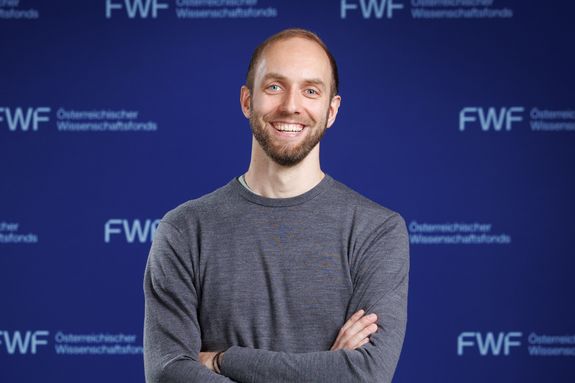Black holes are among the strangest and most fascinating objects ever studied in science. They create extreme conditions under which known physics breaks down, and many central questions about black holes remain unanswered.
Gerben Oling is developing new methods to uncover the secrets of black holes. He combines gravitational theory with quantum field theory, his novel approach builds on the so-called AdS/CFT correspondence – a highly fruitful research direction in recent decades. Oling has now been awarded an ERC Starting Grant from the European Research Council, one of the most prestigious and competitive research grants in Europe.
The Holographic Principle
The foundation of Gerben Oling’s work is the so-called holographic principle: sometimes physical reality can be described using models that require one fewer dimension. The idea is familiar from holograms: they are three-dimensional images that can be viewed from different angles, yet all the information is stored on a two-dimensional surface. It is therefore not clear how many dimensions such a hologram “really” has.
In a similar sense, our universe can also be described holographically: it can be shown that the laws of our universe – including gravity – can be mapped onto a quantum theory without gravity, formulated in fewer dimensions.
This means that there are two completely different physical theories that can be translated into each other. Some problems are easier to solve in one theory, others in the other. By cleverly using the mathematical links between the higher-dimensional and the lower-dimensional descriptions, questions can be answered that had previously been inaccessible.
New Methods for New Questions
“However, so far this holographic principle has mainly been used in the form of the AdS/CFT correspondence,” explains Gerben Oling. “It is based on very specific kinds of spacetimes, with a geometry that does not match the geometry of our universe.” Oling will extend this approach to asymptotically flat spacetimes, which approximate our universe in all but the very largest scales. A key ingredient here is Carroll geometry, a novel mathematical tool that gives a better handle on Einstein’s theory of gravity at the edges of flat spacetimes and in regions of extreme gravity inside black holes.
In this way, some of the major challenges of the holographic principle may be resolved. At the same time, entirely new questions can be addressed – for instance, what actually happens inside a black hole behind the event horizon, and how the chaotic dynamics in such regions can be understood.
Gerben Oling
Gerben Oling studied mathematics and physics at the University of Amsterdam. He then completed a master’s degree in mathematics at the University of Cambridge, followed by a master’s degree focused on string theory at the University of Amsterdam, where he also obtained his PhD in 2018. As a postdoctoral researcher, he worked at the Niels Bohr Institute in Copenhagen, then at Nordita (KTH and Stockholm University), and finally at the University of Edinburgh in Scotland. With his ERC Starting Grant, he will now move to TU Wien, where he will conduct his research at the Institute for Theoretical Physics.
Rückfragehinweis
Gerben Oling, PhD
gerben.oling@ed.ac.uk
Text: Florian Aigner
